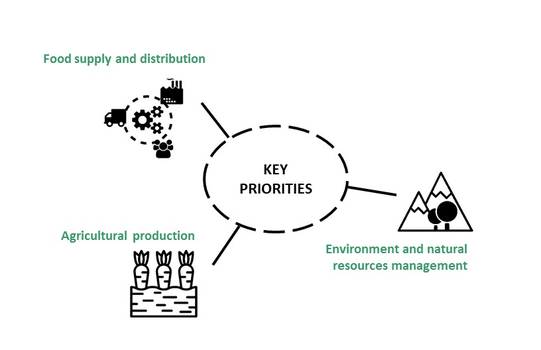Kitwe, Zambia
Background
Kitwe, Zambia’s third largest city, in the Copperbelt region, located in north-western Zambia. Agriculture is Zambia’s main source of income and jobs due to a humid sub-tropical climate. The region is the second most populated and dense area in Zambia after Lusaka, with 39% living in urban areas. It lies on one of the world’s greatest mineral bearing rocks, in particular for copper, dictating the spatial pattern of development.
The city region of Kitwe
Kitwe city region food system includes the 10 districts that compose the Copperbelt Province. Three layers have been defined to characterize the area:
- Primary or Core Region, defined exclusively by Kitwe district;
- Secondary of Peripheral Region, defined by the Copperbelt Province, i.e the area defined as the city region, where most of the food consumed is produced;
- Tertiary or Other Region: Region outside the secondary region but from which the Kitwe food system obtains agricultural, livestock and poultry products.

Main challenges of the Kitwe city region food system
A first appraisal of the different components of the food system in Kitwe city region was conducted in collaboration with the Copperbelt University. It highlighted 3 key priorities for Lusaka city region:

- Agricultural production: Access to land in the core region is very difficult due to high demand as well as competition between agriculture, mining activities and urban development. In addition, farmers are facing challenges such as high input cost, lack of credit facilities and difficulties to access financing, and prevalence of pests and diseases.
- Food supply and distribution: The Kitwe City region has great potential to produce agro-commodities. Although almost all fresh food products are locally produced, the demand exceeds supply and the shortfall is made up by importing from outside the region even outside the country.
- Environment and natural resources degradation: There is a major issue of agrochemicals contamination of the worker’s health and the ecosystems, due to inadequate data to be shared among institutions and lack of awareness on sound agro-chemical management. Significant pollution from mines mainly is concentrated in specific hotspots especially the Mulonga and Nkana rivers and sewerage companies often struggle with water quality.
The way forward
Within a multistakeholder and participatory process, policy strategies and interventions plans have been identified to strengthen the city region food system. For instance:
- Establish a knowledge sharing platforms where actors interact and strengthen their relationships through existing associations.
- Build capacity building for farmers in agro-processing, product labelling, grading and packaging.
- Establish systems that enable farmers access to non-collateral farm loans/insured credits through engagement with financial and agriculture policy makers.
- Promote contract farming through the knowledge sharing platform.
- Engage research institutions to develop more economic methods of value addition for small producers.








